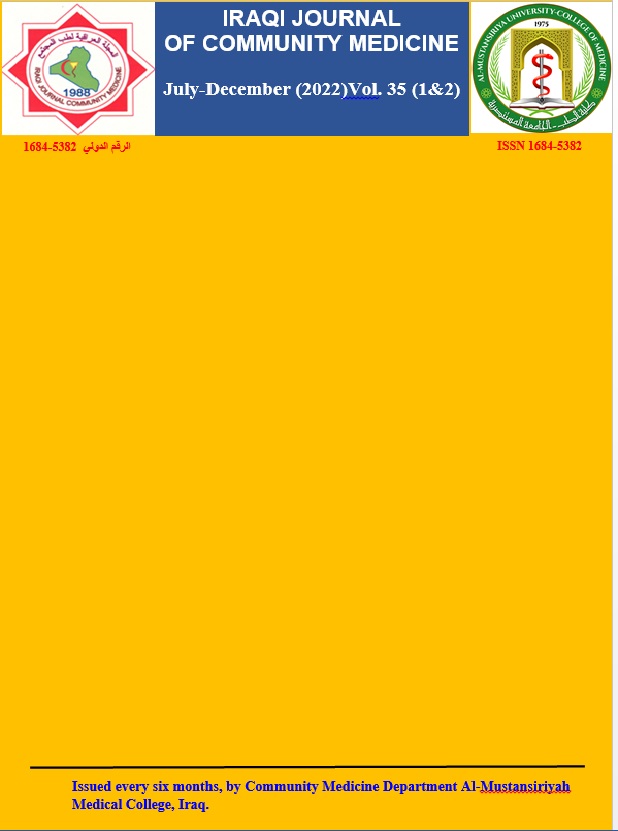Abstract
Objective: To find the exclusive breast-feeding and other practices rates and to identify factors that affect breast-feeding and to find the effect of breast-feeding patterns on the rate of hospital admission for diarrhea and respiratory tract infection of the attendants of New Baghdad Health Center.
Methodology: The sample of the study was consist of 484 mother infant pairs selected randomly every other pairs from the attendants of the primary health care unit for vaccination. The babies ages were recorded precisely to be two years or under. Mothers were interviewed about the current feeding pattern of their babies, and about several factors that play a role to choose the pattern of feeding like mothers’ age, education, parity and employment.
Results: Exclusive breast-feeding rate was 9.8% during the first month and decrease subsequently after that. Predominant breast-feeding pattern was significantly more in males than in females. By the age of fourth months, 23.6% of babies had received solid or semisolid food. Glucose water was given by 68% of mothers in the first 72 hours of infant life. High rate of babies (87.4%) were received water in the first six months. Bottle-feeding babies showed higher percentage rate (21.6%) of admission to hospital because of diarrhea and respiratory tract infection. Conclusion: The exclusive breast-feeding rate was very low in spite of high initiation rate.
Methodology: The sample of the study was consist of 484 mother infant pairs selected randomly every other pairs from the attendants of the primary health care unit for vaccination. The babies ages were recorded precisely to be two years or under. Mothers were interviewed about the current feeding pattern of their babies, and about several factors that play a role to choose the pattern of feeding like mothers’ age, education, parity and employment.
Results: Exclusive breast-feeding rate was 9.8% during the first month and decrease subsequently after that. Predominant breast-feeding pattern was significantly more in males than in females. By the age of fourth months, 23.6% of babies had received solid or semisolid food. Glucose water was given by 68% of mothers in the first 72 hours of infant life. High rate of babies (87.4%) were received water in the first six months. Bottle-feeding babies showed higher percentage rate (21.6%) of admission to hospital because of diarrhea and respiratory tract infection. Conclusion: The exclusive breast-feeding rate was very low in spite of high initiation rate.
